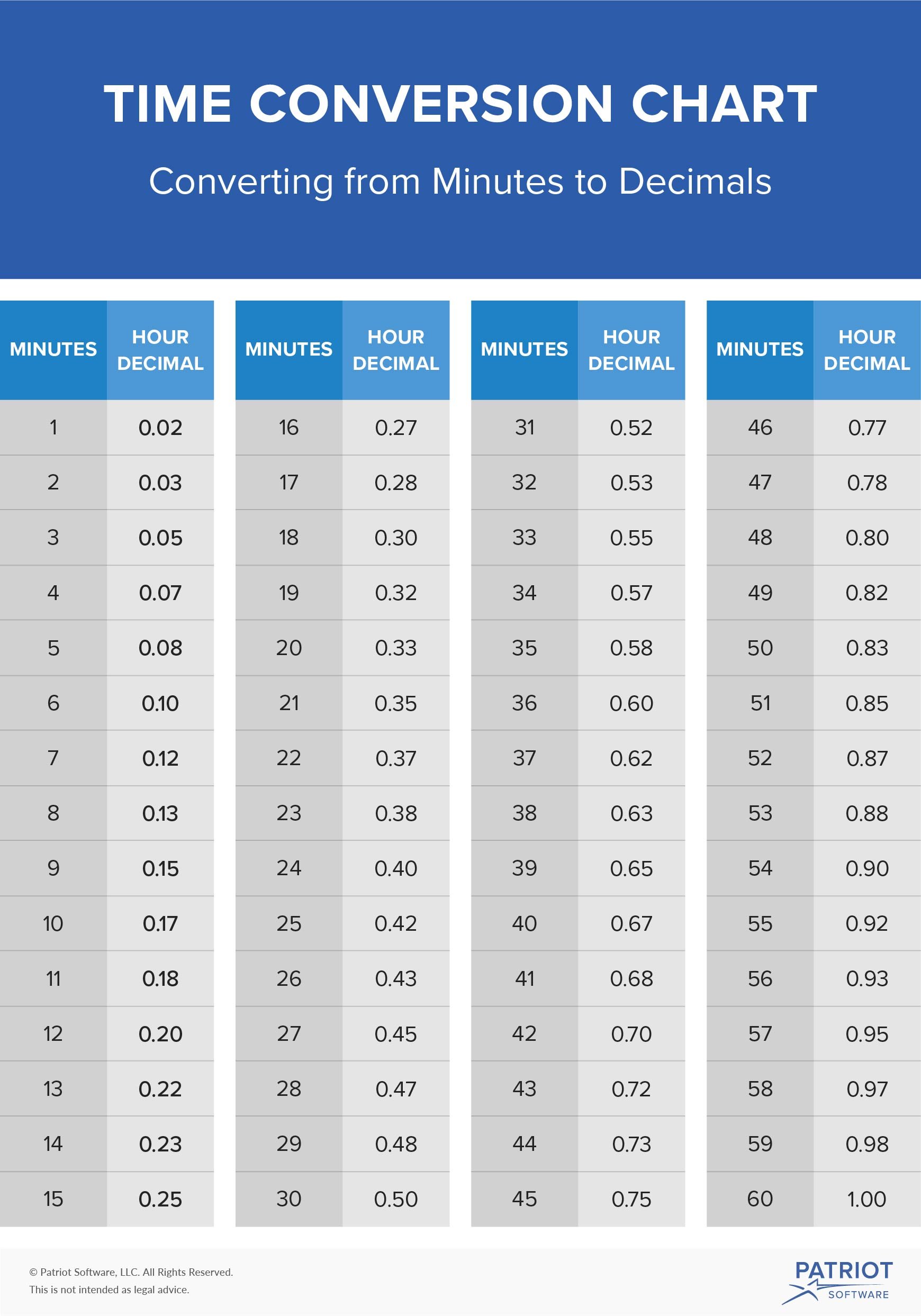
If you don't apply that format you might get some funny results. Note the application of the :mm custom number format to the times in Column B. In this illustration Column C has been formatted to two decimal places to correspond to the two places assigned to the ROUND() function via its second argument:


The inclusion of the ROUND() function limits the calculation of the time to two decimal places in this example, that is, 7.50. If cell B2 contains the time in hours and minutes, for example 7:30, then this formula is one way to turn that time into its decimal equivalent in hours, that is 7.50: A formula to convert a time expressed in hh:mm format into hours and fractions of an hour 7:30, (seven hours, thirty minutes), into a decimal hour value in Excel.
#Time converter to decimal how to#
2011.(e) How to Convert Microsoft ® Excel hh:mm Times Into Decimal Hours
#Time converter to decimal free#
Wikipedia, The Free Encyclopedia, last visited 26 Jun. " Conversion of units" Wikipedia, The Free Encyclopedia. Lide, David R., Daniel (Editor-in-Chief).ĬRC Handbook of Chemistry and Physics, 89th Edition, New York, NY: CRC Press, p. 1-28, 2008. The NIST Guide for the Use of the International System of Units - Appendix B, subsectionsī.8 Factors for Units Listed Alphabetically andī.9 Factors for units listed by kind of quantity or field of science. The National Institute of Standards and Technology (NIST). How Many? A Dictionary of Units of Measurement. Traditionally, observatories had clocks set to this sidereal cycle, and astronomers still use sidereal time in making telescope settings. The sidereal hour equals 59 minutes 50.17 seconds the sidereal minute equals 59.8362 seconds the sidereal second equals 0.997 270 second. Like the regular day it is divided into 24 sidereal hours, each sidereal hour being divided into 60 sidereal minutes and each sidereal minute into 60 sidereal seconds. The sidereal day equals 23 hours 56 minutes 4.090 54 seconds, or 86 164.090 54 seconds. Thus the sidereal day, the average interval between two successive risings of the same star, is shorter than the mean solar day (see day) by 1/366.242. We only count 365.242 because one rotation is cancelled out for us by our tour around the sun. If we could view the earth from outside the Solar System, we would see that it actually completes 366.242 rotations during one year (one revolution around the sun). Sidereal day: a unit of time used in astronomy, equal to the period of time in which the earth makes one rotation relative to the stars. To convert directly from minutes to hours you multiply by 0.01 6. Simplified, this is the same as multiplying by 60/3600 which is 0.016666667. To convert from minutes to hours multiply the number of minutes by 60 and then divide by 3600. Or you can find the simplified factor by dividing the conversion factor for A by the conversion factor for B.

To convert among any units in the left column, say from A to B, you can multiply by the factor for A to convert A into seconds then divide by the factor for B to convert out of seconds.


 0 kommentar(er)
0 kommentar(er)
